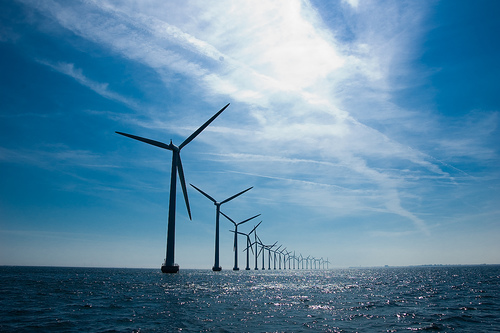 Turbines like these will likely be coming to Cape Cod.Photo: Andjohan via Flickr
Turbines like these will likely be coming to Cape Cod.Photo: Andjohan via Flickr
It’s been the mother of all NIMBY battles, but now it’s closer to resolution: The Obama administration OK’d the nation’s first offshore wind farm in the Nantucket Sound today, with Interior Secretary Ken Salazar making the announcement in Boston.
“I am approving the Cape Wind project,” said Salazar. “This will be the first of many projects up and down the Atlantic coast.”
The $1 billion project will include 130 turbines off the coast of Cape Cod. It’s expected to produce enough electricity to meet 75 percent of the demand on the Cape and the nearby islands of Nantucket and Martha’s Vineyard.
Local opponents — including the Kennedy family — have opposed the project during a siting dispute that’s lasted more than nine years. They’ve argued that the project would disrupt the marine environment, mar ocean views, create too much noise, and hurt commercial fishing. Many clean-energy advocates, on the other hand, have argued that it’s an important flagship project for a fledgling industry that needs to succeed if we’re going to put up a serious fight against climate change. The result has been a public intra-movement dispute among environmentalists, the most prominent example of wilderness conservation priorities and clean-energy infrastructure running into conflict.
Massachusetts Gov. Deval Patrick (D) and Ian Bowles, secretary of the Massachusetts executive office of environmental affairs, have long championed Cape Wind and are claiming the administration’s decision as a victory. Bowles called the announcement “the shot heard ’round the world for American clean energy.”
Of course, other countries are already far ahead of the U.S. in offshore wind: farms are churning off the coasts of Denmark, the U.K., and other coastal European nations. In fact, Germany’s first offshore farm was just launched.
And even now, it’s not clear how quickly the U.S. will catch up. Cape Wind faces several more regulatory hurdles and court challenges that could take years to resolve. And other offshore-wind proposals are likely to face serious scrutiny and opposition too.



